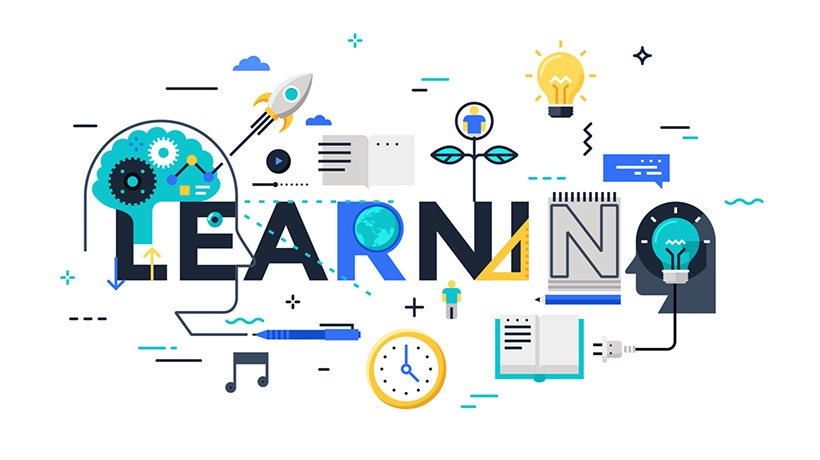What Is Systems Thinking?
Systems thinking is a problem-solving approach that views a system as a whole, focusing on the relationships and interactions between its components rather than isolated parts. In the context of eLearning, it involves understanding how learners, facilitators, technology, content, and institutional factors interact to produce outcomes like engagement, knowledge retention, and skill development. Key principles of systems thinking include:
- Holism
Addressing the entire eLearning ecosystem rather than individual elements. - Feedback Loops
Using data and feedback to refine and improve the system. - Emergence
Recognizing that outcomes arise from the interplay of components. - Adaptability
Designing flexible systems to accommodate diverse needs and challenges. - Interdependence
Understanding how changes in one part affect the whole system.
By applying these principles, educators can create eLearning programs that are dynamic and responsive to learners' needs.
Key Components Of An eLearning System
An eLearning program can be viewed as a system with several interconnected components:
- Learners
The heart of the system. Each one has diverse backgrounds, learning preferences, and goals. - Instructors/Facilitators
Responsible for guiding learners, delivering content, and providing feedback. - Technology
Includes Learning Management Systems (LMSs) like Moodle, video conferencing tools (e.g., Zoom), and interactive apps. - Content
Curriculum, assessments, and resources aligned with learning objectives. - Environment
Institutional policies, cultural context, accessibility, and infrastructure (e.g., internet reliability). - Feedback Mechanisms
Analytics, surveys, and learner-instructor interactions that inform system improvements.
These components interact dynamically. For example, a poorly designed LMS can frustrate learners, reducing engagement, while responsive facilitators can enhance motivation through timely feedback.
Applying Systems Thinking To eLearning
To enhance the effectiveness of eLearning programs, systems thinking can be applied using the following strategies:
1. Design With A Holistic Perspective
Rather than focusing solely on content creation or technology selection, consider how all components work together to achieve learning outcomes. For instance:
- Align Objectives
Ensure that content, assessments, and technology support the program's goals (e.g., skill acquisition, certification). - Incorporate Diversity
Design for varied learner needs, such as different learning styles, accessibility requirements, or cultural contexts. - Example
A corporate eLearning program for software training might integrate interactive tutorials (content), a user-friendly LMS (technology), and regular check-ins from facilitators to ensure alignment with organizational goals.
2. Leverage Feedback Loops
Feedback loops are critical for continuous improvement. Use data from the eLearning system to adapt and refine the program. This data includes:
- Learner Analytics
Track metrics like completion rates, quiz scores, and time spent on tasks to identify areas where learners struggle. - Surveys And Discussions
Gather qualitative feedback to understand learner experiences and preferences.
For instance, if analytics show low engagement in a module, facilitators can adjust content by adding videos or providing additional support, such as live Q&A sessions.
3. Foster Adaptability
eLearning systems must be flexible to address challenges such as technical issues, varying learner skill levels, or evolving educational needs:
- Modular Design
Create content in small, flexible units that can be rearranged or updated easily. - Scalable Technology
Choose platforms that can handle increasing numbers of users or integrate new tools.
For example, an eLearning program for a global audience might offer content in multiple languages and ensure the LMS is compatible with mobile devices for learners with limited access to computers.
4. Recognize Interdependence
Changes in one component affect the entire system. For instance, upgrading to a new LMS may require retraining facilitators and updating content formats. To prepare, you can do the following:
- Plan For Ripple Effects
Anticipate how changes (e.g., new software) impact learners and instructors. - Collaborative Approach
Involve stakeholders like IT teams, instructors, and learners in decision-making to ensure smooth integration.
So, when introducing gamification to boost engagement, let's say, ensure that facilitators are trained to monitor leaderboards and that the LMS supports gamified features.
5. Promote Emergence
Effective eLearning outcomes, such as critical thinking or collaboration, emerge from the interaction of system components.
- Encourage Interaction
Design activities like discussion forums or group projects to foster peer learning. - Support Autonomy
Provide learners with choices (e.g., optional modules) to enhance motivation and ownership.
Imagine you have a course on project management. You should include case studies, group discussions, and simulations, allowing skills to emerge through practical application and collaboration.
Practical Example: Systems Thinking In Action
Consider an eLearning program for teaching data analysis to professionals. It entails:
- Learners
Professionals with varying levels of expertise, some needing basic training, others advanced skills. - Technology
An LMS with analytics, video tutorials, and interactive coding environments. - Content
Modules on statistics, Python, and data visualization, with assessments like quizzes and projects. - Facilitators
Data scientists who provide feedback and host live coding sessions. - Environment
A corporate setting with time constraints and varying internet access.
In that case, using systems thinking would look like this:
- Holistic Design
The program offers beginner and advanced tracks to accommodate diverse learners, with content accessible on mobile devices. - Feedback Loops
Analytics track progress, and weekly surveys identify pain points (e.g., complex topics needing more explanation). - Adaptability
Content is modular, allowing learners to skip familiar topics. The LMS scales to support additional users. - Interdependence
Introducing a new coding tool requires facilitator training and updated tutorials to ensure compatibility. - Emergence
Group projects and peer reviews foster collaboration, leading to deeper understanding and practical skills.
Challenges And Solutions
While systems thinking enhances eLearning, the following challenges may arise:
- Complexity
Mapping all system components can be time-consuming. To solve this, start with a simple model (e.g., learners, technology, content) and expand as needed. - Resistance To Change
Stakeholders may resist new tools or methods. So, it's best to involve them early in planning and demonstrate benefits through pilot programs. - Resource Constraints
Limited budgets or infrastructure can hinder implementation. Therefore, you can prioritize scalable, cost-effective tools and leverage open-source platforms like Moodle.
Conclusion
Systems thinking offers a robust framework for facilitating eLearning programs by addressing the interconnectedness of learners, technology, content, and facilitators. By designing holistically, leveraging feedback, fostering adaptability, recognizing interdependence, and promoting emergent outcomes, educators can create impactful and sustainable eLearning experiences. As eLearning continues to evolve, systems thinking will remain a vital tool for navigating its complexities and ensuring learner success.









